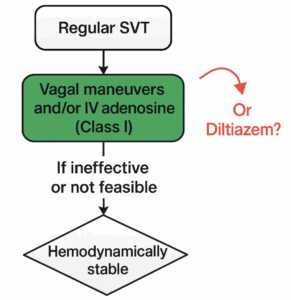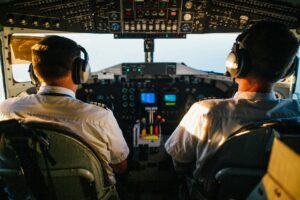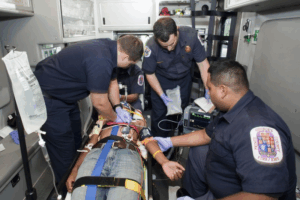Authors: Ingrid Bloom, MD, FACEP, FAEMS, is an associate professor of emergency medicine at Emory University, associate program director for the EMS fellowship at Emory and medical director for Grady EMS Academy. James Li, MD, MEd, FAEMS, is an assistant professor of emergency medicine at Washington University School of Medicine and is the program director for the EMS fellowship. He also serves as the medical director for Christian Hospital EMS Academy.
Editor: Michael DeFilippo, DO; Assistant Professor of EM and EMS – Washington University at St. Louis School of Medicine

Medical direction is an essential component of a well-functioning Emergency Medical Services (EMS) system.
There are many roles for medical directors in the EMS arena. Most commonly, EMS system medical directors have an operational role overseeing the medical care delivered by an EMS agency. Another important role is EMS education program medical direction, by which the medical directors oversee the clinical and educational aspects of initial EMS clinician education.
Medical directors provide a layer of accountability to the public, reassuring stakeholders that prehospital patient care is guided by expert medical judgment. They also serve as role models and mentors, building strong physician–EMS clinician partnerships from the beginning.
The importance of medical oversight begins in the classroom, long before an EMS clinician cares for patients. Unfortunately, there often is not enough engagement from physicians during formative educational programming to consistently achieve these goals. The data available show that many paramedic education programs do not have sufficient medical director involvement and physician interactions (14% and 11% respectively) to meet benchmarks for necessary resources. Indeed, they are two of the most frequent deficiencies identified in programs’ reporting to the Committee on Accreditation of Educational Programs for the Emergency Medical Services Professions (CoAEMSP).
Since 2013, all paramedic programs must be accredited by the Commission on Accreditation of Allied Health Education Programs (CAAHEP) or hold the CoAEMSP Letter of Review (LoR) for graduates to become nationally certified. And central to the National EMS Education Standards, developed in conjunction with the National Highway Traffic Safety Administration, is the notion that every EMS education program must have a medical director. These are standards that drive not just competency, but also excellence.
Beyond the classroom, some of the most critical skills an EMS student needs to develop depend on access to clinical and field experiences, with oversight from a physician. Mastery of on scene, real-time prioritization and clinical decision making can only be actualized through maximal clinical and field learning experiences for EMS students.
This art of patient care, including the emotional component, tapping into the affective learning domain, must be practiced, through real patient encounters. Where else can an EMS student learn how to build trust with a distraught parent whose young baby is seriously injured? Or how to reassure an adult patient who is experiencing a heart attack? These are scenarios that cannot be taught from a textbook – they must be experienced.
According to a survey of paramedic education programs recently conducted by CoAEMSP, more than half (55%) experienced a decrease in clinical facility access attributed to competition with other health sciences students (75%) and other EMS programs (53%). Clinical units that are less frequently accessed by programs include neonatal intensive care units (20%), psychiatric units (37%), respiratory therapy services (38%), and interventional cardiac catheterization labs (45%). *
And the trend continues for field experiences. Nearly one-third of programs have experienced a decrease in access to EMS agencies for EMS field experience (32%) and capstone advanced EMS field internships (32%). The most challenging patient encounters to access in any environment include neonate (80%), infant (65%), toddler (52%), preschool (41%), and obstetric (41%). *
Medical directors for EMS Education programs are vital to maintain relationships with the clinical sites needed to ensure adequate exposure and experience with varied patient populations and EMS presentations.
The following are ways that physicians can engage paramedic learners.
While in the emergency department:
- Supervised patient care: Allow paramedic students to participate in patient evaluations, procedures, and decision-making with direct feedback.
- Procedural exposure: Facilitate practice with airway management, IV/IO access, trauma resuscitation, and other high-yield skills.
- Case-based teaching: Review EMS transports after handoff, walking through what went well and what could be improved upon.
- Debriefing: Engage EMS learners in structured debriefs after critical cases (e.g., cardiac arrest, trauma).
- Interprofessional collaboration: Model respect and teamwork between physicians, nurses, and EMS to reinforce professional culture.
While in the field:
- Ride-alongs: Join EMS crews in the field to understand challenges, offer feedback, and model bedside manner in prehospital care.
- Scenario debriefs: Lead “hot-wash” discussions after training drills or real calls.
- Protocol and guideline discussion: Help EMS professionals connect field protocols with the underlying evidence and clinical reasoning.
While in the classroom:
- Classroom-based teaching: Engage students by teaching cognitive, psychomotor, and affective skills through didactics and procedure labs.
- Simulation-based training: Lead high-fidelity simulations that mimic complex prehospital scenarios.
- Curriculum design: Adapt the curriculum to teach the most up-to-date evidence-based medicine and address any potential educational gaps.
When we work together with our EMS colleagues, we invest in the quality of our EMS systems and the health and well-being of our communities. As more emergency physicians agree to embrace this opportunity, we drive to excellence in prehospital patient care – today, and for the next generation.
Interested in learning more? There are pre-conference workshops and didactics through NAEMSP’s Annual Meeting and CoAEMSP’s ACCREDITCON for professional development for a medical director of an EMS education program.
*Respondents could choose more than one answer.
The National Association of EMS Physicians sponsors both Drs. Bloom and Li on the CoAEMSP Board.



